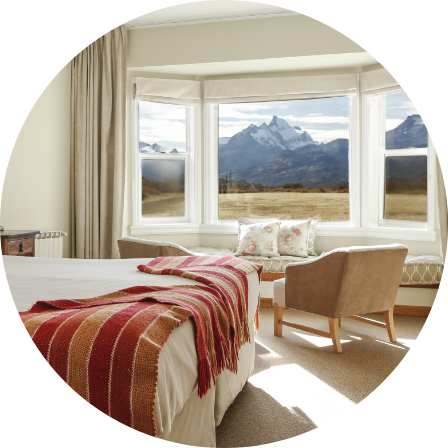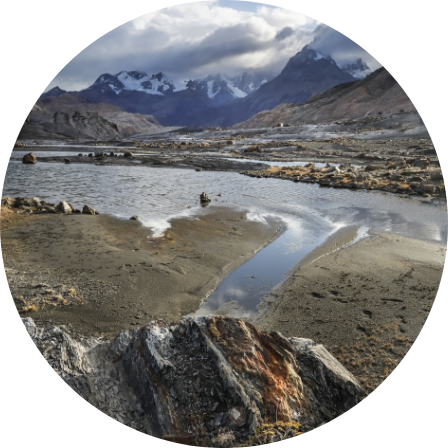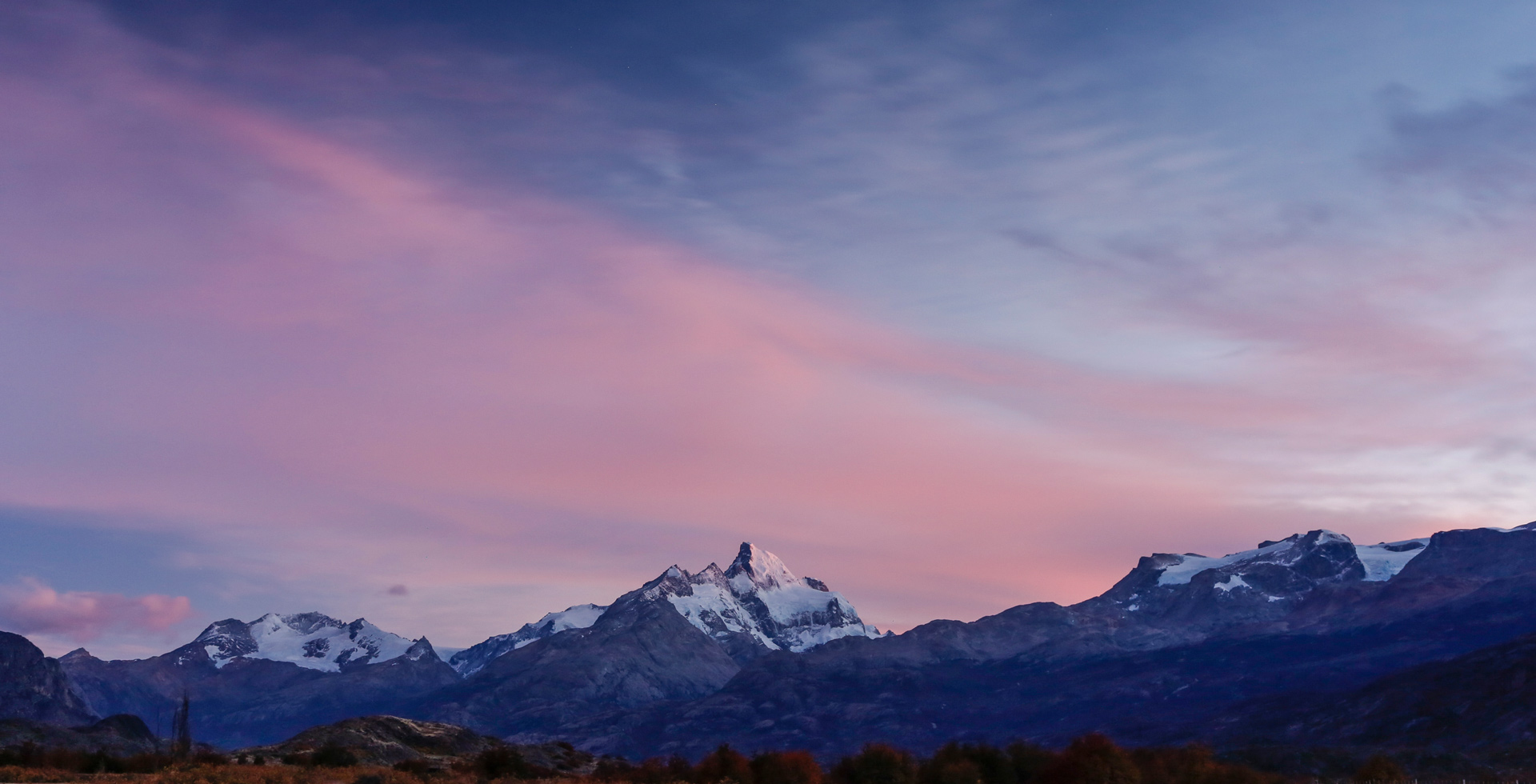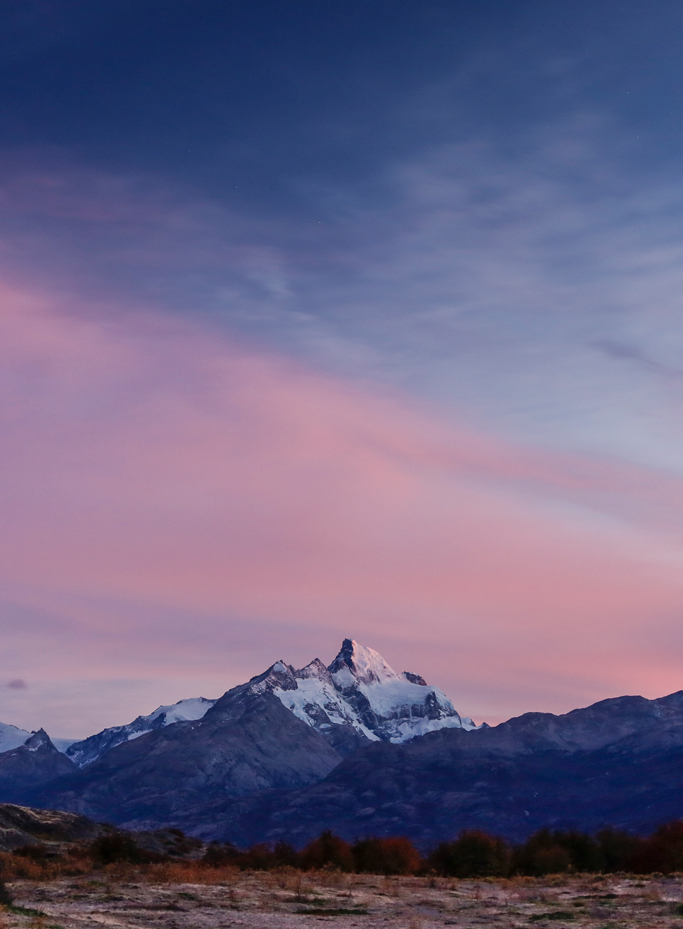BOOK A STAY IN THE LODGE
RATES STAY








Joseph and Jessie Masters faced the adversity of the terrain and weather to reach the depths of Patagonia on a voyage of discovery. We maintain their pioneering spirit that, with enormous effort and perseverance, turned this untamed and lonely place into their home
Our story began in the 1870s when the growth of industry in Europe and the United States started to demand high-quality raw materials from other nations. Soon, the world was divided into two types of countries: the industrialized ones and the ones with valuable natural resources that could specialize in producing different raw materials such as meat, leather, wool, etc.
Seeking to encourage immigration in distant Patagonia, the Argentine government enabled land leasing for sheep wool production with minimal requirements. In the province of Santa Cruz (where we are), it was common to lease 20,000 hectares for 30 years in exchange for paying taxes.
Percival Masters and his wife, Jessie, arrived in Río Gallegos, on the Atlantic Coast in the province of Santa Cruz. Soon they found jobs and learned livestock skills related to sheep farming. A few years later, their family grew and they began to write their own story as pioneers of these lands.
Along with the Masters’ two children, Herbert (1902) and Cristina (1904), the hope of a new home was born. They dreamed of a ranch of their own. Since there was still time to stake a claim to land in the west, the family moved from Río Gallegos to the area around Lago Argentino.
The family eventually settled on the eastern shore of Lago Argentino, close to what is today known as Boca del Diablo, inspired by stories about Río Caterina Valley told by Prichard, the English journalist in search for the MILODON. Percival, Jessie, Herbert, and Cristina established the Masters’ Estancia in the remote valley. They bought the “César,” a steamboat that allowed them to be connected with nearby towns and El Calafate.
Joseph and Jessie send Herbert to Buenos Aires to study. Meanwhile, Jessie’s brother, Fred Wilding, arrived at the ranch to help.
By that time, they had 12,000 sheep, two motor boats and two vans to transport wool.
While the family grew their sheep farming business successfully, a tragic event occurred: their daughter Cristina, a highly energetic young lady who enjoyed her daily duties in the fields, caught pneumonia and died at the young age of 20. In her memory, the family renamed the ranch Estancia Cristina, a name we keep to this day as part of the legacy and history of the place.
Argentina established Parque Nacional Los Glaciares in order to preserve Patagonia’s natural heritage. Estancia Cristina lies within this territory, so now the National Park Administration supervises its activities. The Masters had to abandon their dream of legal land ownership. However, the National Park granted them and their children exclusive occupancy permits under which they could live and work the land. The terms meant that they could never sell the property, and if there were no descendants, the care of the land would revert to the National Park Service.
When a storm on the lake almost ended in tragedy for the steamboat César, Herbert Masters and Mansilla, his carpenter, decided it was time to construct a new ship. They used designs from the magazine “Mecánica Popular,” which was regularly delivered to the Estancia, and imported an engine from the United States to build a faster and safer boat: the “Cristina”. Today we can visit it at the Estancia.
Under prescription and medical suggestion, the Scottish Janet Hermingston arrived in Estancia Cristina to assist Jessie Masters.
Janet quickly developed an affection for the place, got along well with the family, and gradually joined Herbert in the management of the estancia.
After the passing of Percival (1997) and Jessie (1997), Herbert and Janet remained the only stewards of the land.
After many years of mutual companionship, Herbert and Janet got married. Two years later, the passing of Herbert left Janet as the last heir. Since cattle ranching declined and lots of climbers and adventurers were visiting the valley, Janet decided to adapt the Estancia for tourism.
Janet remodeled the estancia with the support of her mountaineering friends, turning it into an exceptional destination and complying with all of the National Park’s requirements. They removed all cattle and their “Exploration and Grazing” permit was modified to one focusing on tourism. Janet established a legal society with friends, who accompanied and took care of her until her last days.
The end of the Masters’ heirs came with Janet’s farewell at the age of 93. Today, the land belongs to the National Park Service, and ESTANCIA CRISTINA SA. manages the operations of the granted permit.
Since Janet’s adaptation of the lodge for touristic purposes, Estancia Cristina has been sharing with their guests and visitors the spirit of this pioneer family that managed to conquer its journey with effort, dedication, and a lot of love.